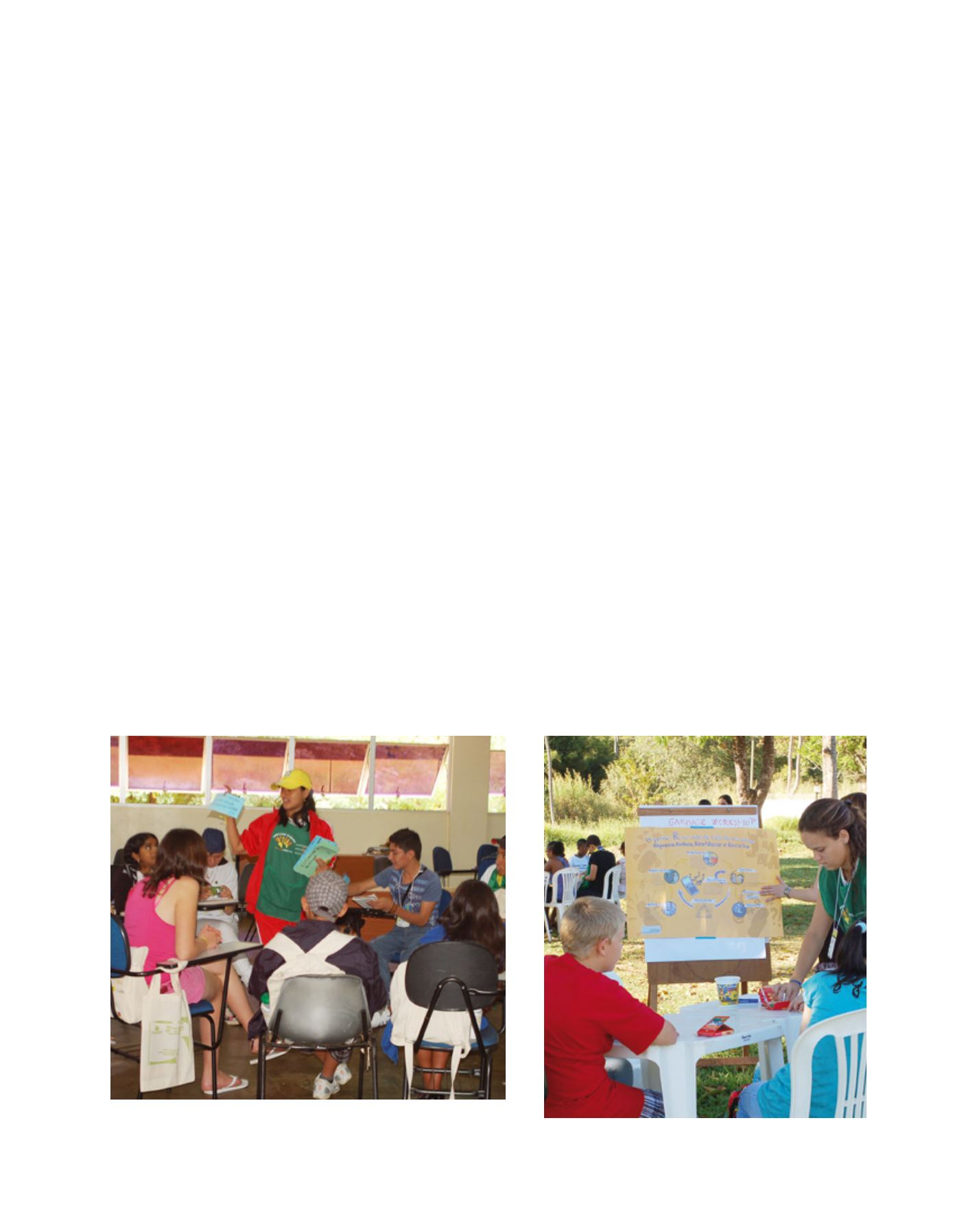

[
] 77
tal education perspective. From the first, essentially
Brazilian cycle, new possibilities arise, involving other
countries on all continents that have already begun
their own processes of school, regional and national
conferences and supported us in the construction of
the International Conference. In the countries repre-
sented in Brasilia, various cycles are being produced in
many places with other people and cultures, shared and
transformed according to their own realities.
The success of the Brazilian National Conference
is reflected in the figures: the first, in 2003, involved
15,452 schools and mobilized 5,658,877 people through-
out the country. The second, in 2005-2006, reached
11,475 schools and communities and 3,801,055 indi-
viduals, and witnessed our youth delivering a Charter
of Responsibilities to President Lula. This charter, Let’s
Take Care of Brazil, is committed to constructing “fair,
happy and sustainable societies with responsibilities and
actions that fulfil dreams and needs”.
The Third National Conference process was held
during 2008 and 2009 in 11,670 schools, involving over
four million people in the school- and state-level debates,
culminating in a national event in April 2009. As this
conference occurred in the midst of a global environmen-
tal/economic crisis, the environmental education system
has been confronted by a triple challenge:
•
The psychological
: building significant knowledge
without creating fear of the catastrophe studied or
paralysis in addressing potential destruction
•
The educational
: proposing a contemporary
education solution, which may rescue the
social function of the school as a creative and
transformative learning environment. The ministry’s
Education Development Plan promotes integrated
The Government of Brazil organized and hosted these events with
an international focus, and received institutional support from agen-
cies for development and cooperation such as UNESCO, UNICEF
and UNEP, and from civil society bodies such as the Fondation
Charles Léopold Meyer pour le Progrès Humain (FPH). Each confer-
ence, as well as the resolutions arising from it, is the expression of
a collective action between international organizations and institu-
tions, national governments, civil society and schools.
The youth conferences satisfy elements of the Brazilian National
Constitution of 1988, which asserts the rights of present and future
generations to quality education and to a healthy and ecologi-
cally balanced environment. They also reaffirm values and actions
proposed by international civil society, such as the Treaty on
Environmental Education for Sustainable Societies and Global
Responsibility, the Earth Charter, Agenda 21 and the Charter of
Human Responsibilities, and help to further the debate on the
United Nations Development Programme’s eight Millennium
Development Goals.
A great pedagogical opportunity for intercultural dialogue
When thinking about sustainable development, it is impor-
tant to be aware that the environment cannot be reduced to
worries about ecology or an area of biological science or nature
that constitutes the basis for sustaining life in the biosphere.
In modern society, nature has been transformed into areas of
action in which we need to take political, practical and ethical
decisions. The conference process is one of these areas of action,
aimed at contemporary education where all of us are learning
about sustainability. In environmental education, each school
has an opportunity to be a space for permanent learning, based
on dialogue and respect for all life forms.
The Children and Youth Conference could be seen almost as a
pedagogical pretext to promote and update the debate so urgently
needed in society, from a critical and participative environmen-
Linguistic groups: defining actions for the Charter of Responsibilities initiative, Let’s
Take Care of the Planet
Workshops for sustainability – garbage policies
Image: Ministry of Education, Brazil
Image: Ministry of Education, Brazil
















